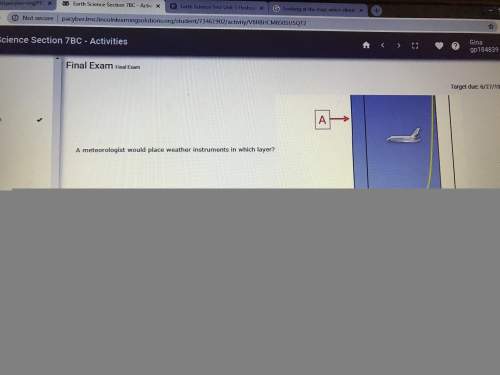
You have made a specific dna probe that will bind to a key sequence on the dna of neisseria gonorrhoeae, allowing your company to market a gonorrhea test kit that can be used to identify the bacterium in genital tract specimens. however, upon testing it out against a known neisseria gonorrhoeae culture, you find that it does not work. which of the following is a possible explanation for this negative result? a. you forgot to label the probe sequence with a reporter molecule.
b. you forget to digest the probe with restriction endonucleases
c. you forget to add the mrna to the dna probe sample.
d. you forgot to incubate the test at the 75c temperature required for hybridization.

Answers: 3


Other questions on the subject: Biology

Biology, 22.06.2019 04:00, zegangke1651
Will mark brainliest i only need the ! 1.use ten beads and a centromere of one color to construct the long chromosome. use ten beads and a centromere of a second color to construct the second chromosome in the long pair. make a drawing of the chromosomes in the space below. 2. for the second pair of chromosomes, use only five beads. 3. now model the replication of the chromosomes. make a drawing of your model in the space below. part b: meiosis i during meiosis i, the cell divides into two diploid daughter cells. 4. pair up the chromosomes to form tetrads. use the longer tetrad to model crossing-over. make a drawing of the tetrads in the space below. 5. line up the tetrads across the center of your “cell.” then model what happens to the chromosomes during anaphase i. 6. divide the cell into two daughter cells. use the space below to make a drawing of the result. part c: meiosis ii during meiosis ii, the daughter cells divide again. 7. line up the chromosomes at the center of the first cell, one above the other. separate the chromatids in each chromosome and move them to opposite sides of the cell. 8. repeat step 7 for the second cell. 9. divide each cell into two daughter cells. use the space below to make a drawing of the four haploid cells
Answers: 1

Biology, 22.06.2019 05:50, Kittylover65
Which of the organisms listed below performs nitrogen fixation? a. legumes b. plants c. bacteria d. fungi
Answers: 2

Biology, 22.06.2019 12:20, Yumimiku6539
Which organ controls breathing? lungs alveoli heart diaphragm
Answers: 2

Biology, 22.06.2019 15:50, Nigward666
We all have different forms of genes from our parent(s).what are these different forms called? a. alleles b. characters c. dna d. resources
Answers: 2
You know the right answer?
You have made a specific dna probe that will bind to a key sequence on the dna of neisseria gonorrho...
Questions in other subjects:



Mathematics, 18.05.2021 05:00

Mathematics, 18.05.2021 05:00



Mathematics, 18.05.2021 05:00

Spanish, 18.05.2021 05:00






